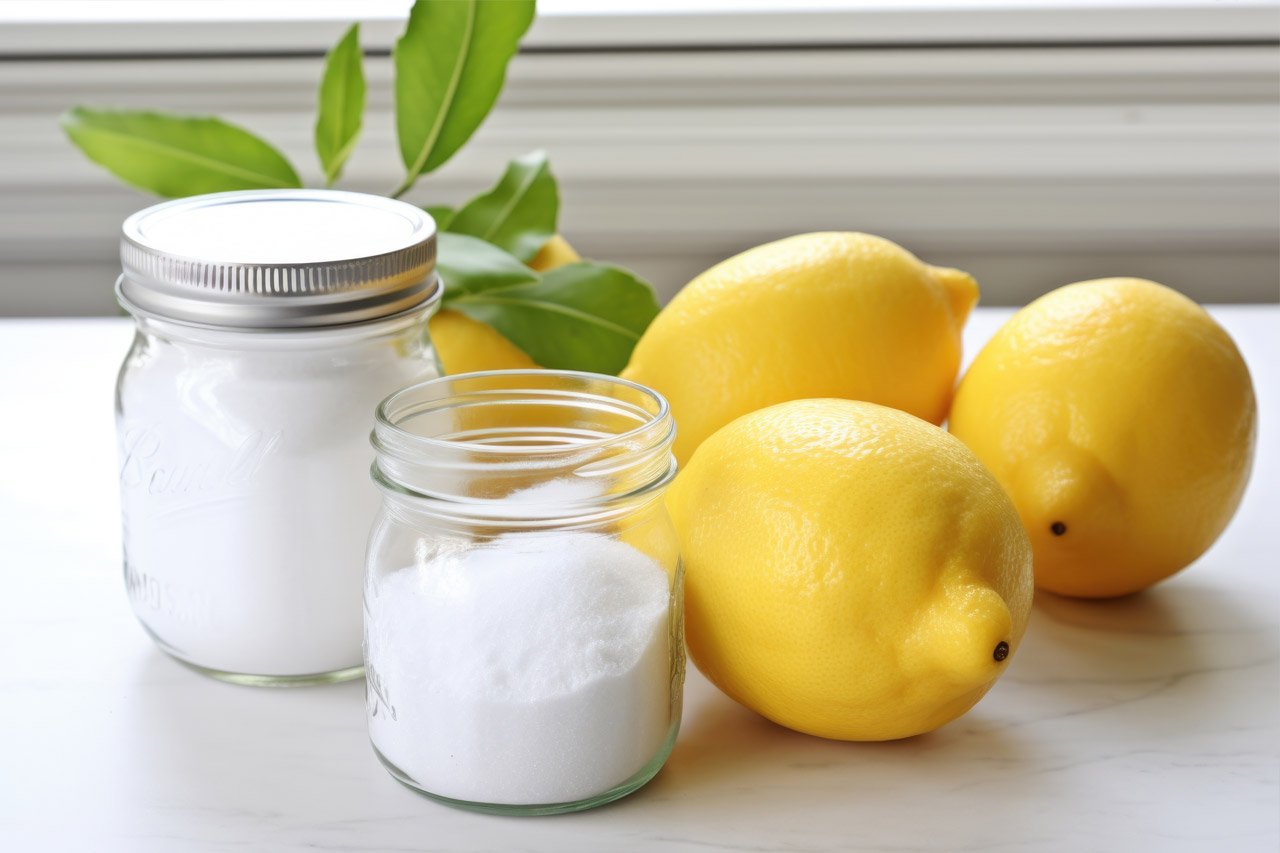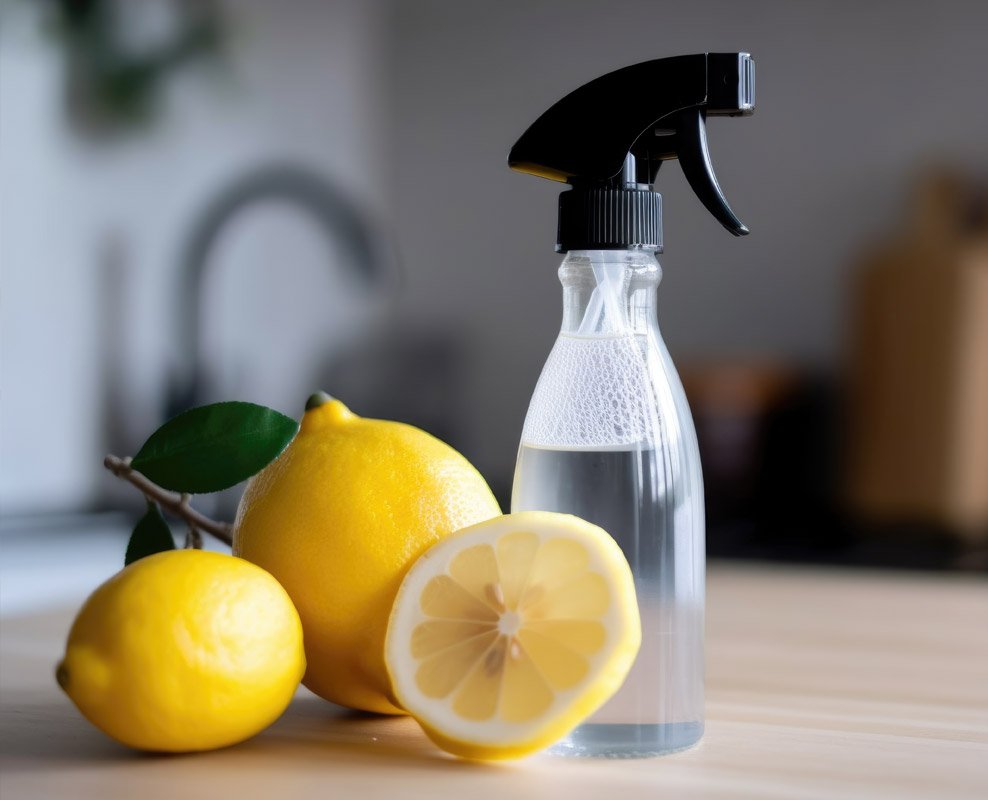Home remedies to have a clean bathroom
25 January 2024

How to remove accumulated limescale?
One of the most troublesome problems in the bathroom is the limescale. It accumulates in the areas that are in contact with water: on bathroom fittings, on tiles and in the toilet bowl. Although scale appears virtually in every bathroom, not everywhere it’s an equally serious problem. Much depends on the water hardness level. How to remove limescale from bathroom tiles and from other surfaces? Certainly, we can reach for specialized products, but homemade bathroom cleaners can actually be found on the kitchen counter or in the cabinet. What are they, and what else will work when home dwellers are wondering what to use to wash, for instance, bathroom tiles?
Citric acid for stubborn limescale and rust
The well-known citric acid comes to the rescue in the fight against limescale. It’s ecological, economical and effective. It works in a similar way as natural acids. That is, when it comes into contact with scale and rust, it reacts with them and dissolves them. The way it’s used is simple. Just cut a lemon and rub it onto the surface covered with scale or rust. After a while, they will begin to dissolve. You can also reach for citric acid powder. By mixing it with water, you will obtain a solution that works just as effectively. The prepared remedy should be applied to the scale-covered area and left for some time. Afterward it’s enough to wash the surface with a soft cloth and water. This is an effective home remedy to have clean grout and fittings. Limescale accumulated over a long period of time is a bigger problem. There’s another matter here - the frequency of cleaning. Cleaning bathroom tiles with home remedies is one thing, but regularity is important.

Systematicity is the key
To avoid stubborn dirt, cleaning bathroom tiles, other surfaces and sanitary ware should be done systematically. Even if the household members have professional products and know what to clean the bathroom with, if cleaning is done rarely, they may not be effective enough, and it can be hard to get rid of the splotches. It’s much easier to remove fresh dirt and limescale than one that has been accumulating for weeks, if not months. A small but regular effort to wipe and wash the bathroom will help keep it clean and, contrary to appearances, save a lot of time. Back to the main topic, depending on where the dirt appears and how deep it is, it’s approached differently. What will be good for cleaning shower enclosure glass surfaces?
How to remove deposits from glass shower enclosures?
Soap and limescale deposits on the shower enclosure glass can be a nightmare. Glass emphasizes all imperfections and dirt, hence even small splotches are very visible. The before-mentioned lemon is our solution. It will help to eliminate the dirt and it won’t damage the glass surface. Another way is to use a mild dishwashing liquid and a sponge or cloth.
To save time on cleaning the shower enclosure glass, it’s best to focus on models whose panels are covered with a water-repellent coating. With it, water doesn’t go down in streaks but in drops, which prevents unsightly stains. This solution is used by SanSwiss, the manufacturer of shower enclosures and shower trays. What’s important, however, is that special products are used to wash the enclosures with the water-repellent coating. Unsuitable products could damage the coating, making it lose its properties. Suitable products from SanSwiss offer include Glass Cleaner, Power Cleaner and Protect Cleaner.
Baking soda is often used for cleaning, however for materials such as glass, it should be avoided. It has strong abrasive properties, so it could scratch the surface. But would it work as a home remedy to clean grout?
The nooks and crannies always accumulate the most troublesome dirt, which is difficult to deal with later. When it comes to the bathroom, grout between the tiles is such a spot. It provides an ideal place for the growth of mold and other fungi, and limescale deposits are difficult to remove here. What can be used to clean bathroom tiles isn’t necessarily enough to clean grout. Of course, we can go for vinegar or lemon, but in this case it’s better to opt for something stronger. Here the previously mentioned baking soda would work great. Or even better, mix baking soda with water and vinegar. All we need to do is apply such a solution with a toothbrush to our grout and give it a rub, and then wash it off with water. Another effective way is to use toothpaste. It also has abrasive properties. Another common bathroom problem is an unpleasant smell.

How to unclog the pipes and get rid of the bad smell?
In shower trays, it’s important not only to wash its visible part, but also its drain. To do this, we need to remove the drain cover and clean the strainer. If it’s possible, it’s recommended to remove and rinse the trap as well.
In the case of pipes and shower trays, lemon proves effective again in the fight against odor. It can be used both when cleaning the tray and washing the drain. It has disinfectant properties and is great at neutralizing odors. An equally good way is to use baking soda. All you need to do is pour it into the pipe and flush it with warm water.
Summary
When wondering what to use to clean the tiles and other elements in the bathroom, the first thing to do is reach for home remedies, and there are quite a few of them. In most cases, it’s enough to use means available in every home. Lemon, vinegar, baking soda, toothpaste and mild detergents are usually sufficient. By cleaning the bathroom regularly, once a week for example, there will be no need to resort to more invasive methods or, even worse, advance the renovation.